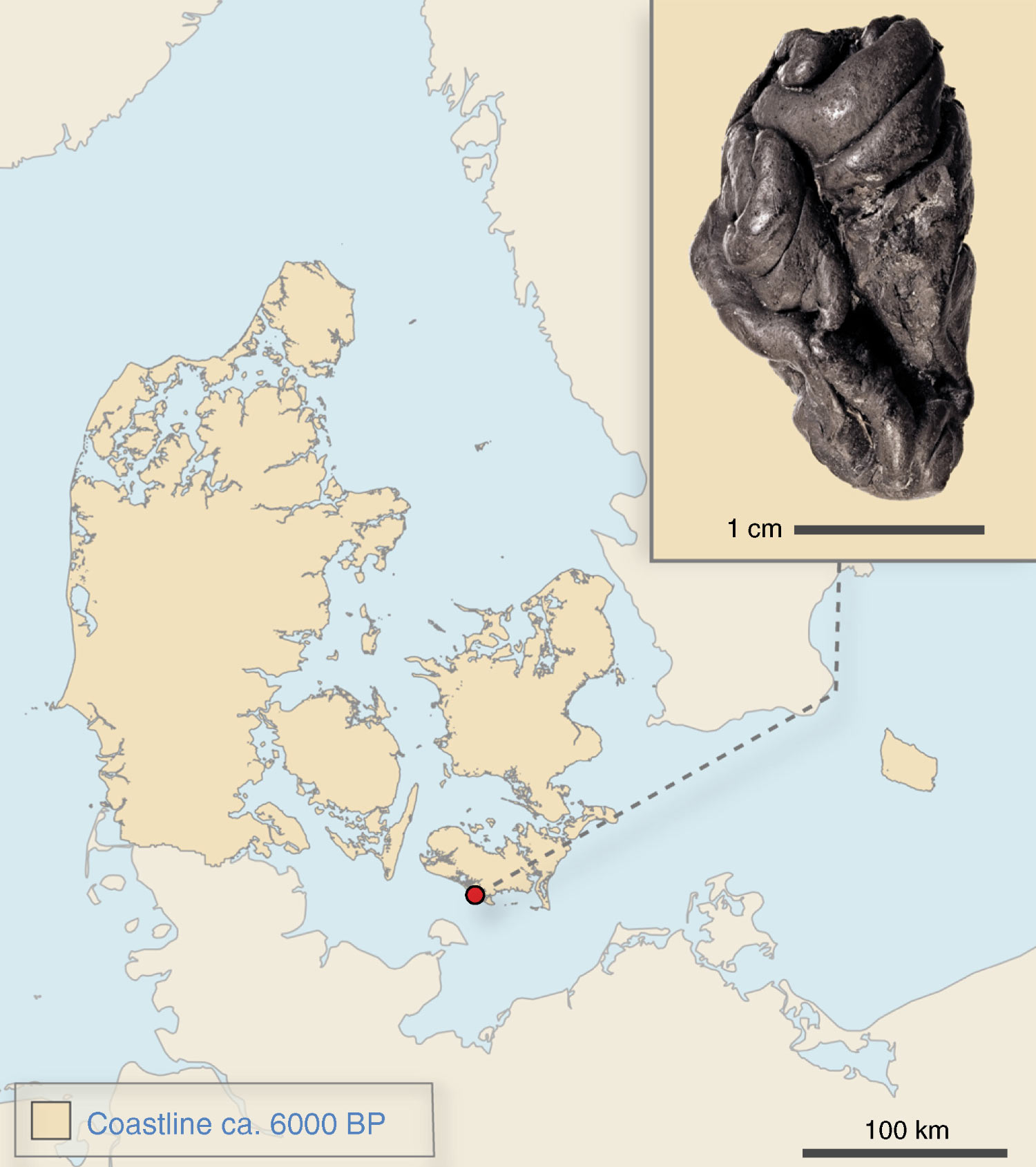
Scientists recover and decipher human DNA from a piece of ancient “chewing gum”
An international team of researchers has assembled a human genome using just the remnants of a piece of birch tar—last chewed some 5,700 years ago. Scientists have pieced together quite a bit about the person’s life using DNA left in the tar, learning about everything from her diet to certain diseases she carried.
The female, nicknamed Lola for the location of the birch tar (Lolland, an island in Denmark), could help provide context to archaeological findings and hypotheses about early humanity.
It’s the first time a human genome of this age has been reconstructed using anything other than bone, so it opens the door for even more archaeological breakthroughs. Let’s take a look at what we can learn from Lola.
Discovering a Person
How is it even possible for DNA to survive for 5,700 years in a piece of chewing gum? In part, it’s because of the substance itself.
The DNA was found in birch tar, which was used as a type of resin for tasks like attaching stone tools to wooden handles. Scientists have previously found birch tar with teeth marks, showing that ancient people chewed the substance. Some surmise they may have chewed the tar to make it malleable for its toolmaking purpose. Other evidence suggests it may have been used medicinally as well. It may also have simply been chewed in the same way modern humans chew gum.
The scientists that reconstructed Lola’s genome write in their research paper that birch tar itself does an excellent job of preserving DNA, since it is hydrophobic. Because the birch tar helps repel water, samples contained within are protected. They also write:
The genomic information preserved in chewed pieces of birch pitch offers a snapshot of people’s lives, providing information on genetic ancestry, phenotype, health status, and even subsistence.
Not only did the DNA extracted from this piece of birch tar give us a human genome, it also gave us insight into the microbial environment in Lola’s mouth, helping us draw conclusions about aspects of her life, like her diet and health.
What She Looked Like
We learned a remarkable amount about Lola just from this mouthful of tar. For example, scientists were able to determine she most likely had dark skin, dark hair and blue eyes. It was enough information for an artist to create a rendering.
However, we also learned more context about her life. Scientists found additional DNA that helped flesh out what we know. They found traces of hazelnut and duck, potentially what Lola last ate before putting the tar in her mouth.
They also found her to be lactose intolerant, which was common at the time. Traces of her microbiome revealed aspects about her health. A Gizmodo article on the finding explains:
The vast majority of microbes identified were harmless, but the researchers identified Porphyromonas gigivalis, a bacterium linked to gum disease, bacterial DNA associated with pneumonia, and the Epstein-Barr virus, which causes mononucleosis, also known as mono or glandular fever.
In short, scientists know more about this person that lived 5,700 years ago than most of us would know about our next door neighbor.
Historical Context
While it’s neat for DNA to be able to give us a glimpse of the past, Lola teaches us about more than just one person. She bolsters our understanding of the development of human civilizations.
At the end of 2019, we talked about Dogor, an 18,000-year-old puppy found almost perfectly preserved. In that article, we explored how Dogor could help reveal missing evolutionary links in the transition from wolf to dog. Similarly, Lola can help us better grasp how society and culture developed during human prehistory.
For instance, Lola and her microbiome help develop our understanding of the European shift from a hunter-gatherer lifestyle to an agricultural one. National Geographic notes:
Lola’s DNA shows none of the genetic markers associated with new farming populations entering northern Europe, bolstering a growing idea that genetically distinct hunter-gatherer populations in the region survived for longer than previously thought. Her genome also reveals that she was lactose intolerant, which supports the theory that European populations developed the ability to digest lactose as they began to consume milk product from domesticated animals.
We can also learn more about how the appearance of Europeans gradually changed. The authors of the paper point out that Lola’s dark skin suggests the adaptive spread of light skin didn’t happen until later in the prehistoric era.
New Opportunities
Lola gives us incredible insight into humans of her era, and she helps close some knowledge gaps. However, she also demonstrates our remarkable advances in DNA, which will only open more doors in the future. As the first reconstructed genome of its era that didn’t rely on bone, Lola gives hope that we will continue to restore more and more specimens with the ultimate goal of fully understanding how we—humanity—came into our modern form.
Get the Latest Sharable Science Delivered Straight to Your Inbox!
[gravityform id=19 title=false description=false ajax=true][wprpw_display_layout id=8]




